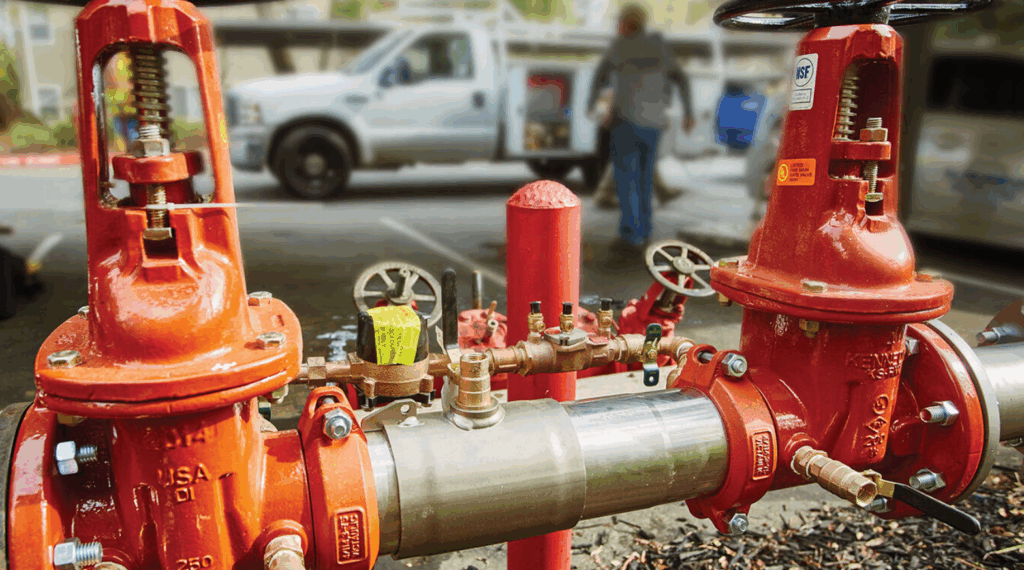What is a Reduced Pressure Zone Backflow Device?
A Reduced Pressure Zone (RPZ) backflow device is a critical component in plumbing systems designed to prevent contaminated water from flowing backward into the clean water supply. It consists of two independent check valves and a relief valve that activates if pressure drops, ensuring maximum protection against backflow.
Unlike standard backflow preventers, RPZ devices provide the highest level of safety by discharging water if a failure occurs. This makes them a preferred choice for municipalities, commercial buildings, and industrial facilities where water purity is essential.
Why is a Reduced Pressure Zone Backflow Device Required?
RPZ valves are mandated in many areas because they offer superior protection compared to single or double-check valves. Contaminated water from industrial processes, irrigation systems, or fire suppression lines can pose serious health risks if it flows back into the main supply.
Additionally, local plumbing codes increasingly require RPZ devices for domestic water lines, fire sprinkler systems, and high-risk facilities (e.g., hospitals, chemical plants). Their fail-safe design ensures that any backflow is diverted away from the clean water system, safeguarding public health.
How Does a Reduced Pressure Zone Backflow Device Work?
The RPZ valve operates using two check valves and a pressure-monitored relief valve. Under normal conditions, water flows in one direction, and both check valves remain closed when water pressure drops. If backflow occurs, the relief valve opens, releasing water to prevent contamination.
This design provides a visible warning—if water discharges from the relief port, it signals a malfunction. This immediate alert allows for quick repairs before any hazardous backflow enters the water supply, making RPZ devices the most reliable backflow prevention method available.
Where Should You Install a Reduced Pressure Zone Backflow Device?
The best location for an RPZ valve is outside in a heated enclosure designed for backflow preventers. This setup prevents freezing while safely containing any water discharge. Enclosures must meet ASSE 1060 standards, ensuring proper drainage and durability.
Avoid installing RPZ valves indoors or in ceilings, as water discharge can cause severe property damage. Mechanical rooms, utility closets, and attics are not suitable unless equipped with proper drainage and waterproofing measures.
Step-by-Step Installation of a Reduced Pressure Zone Backflow Device
- Shut off the main water supply before beginning installation.
- Position the RPZ valve vertically, following manufacturer guidelines.
- Install isolation valves upstream and downstream for easy maintenance.
- Connect to a proper drainage system to handle discharge (up to 710 GPM for large valves).
- Test the valve to ensure proper operation before restoring water flow.
Professional installation is recommended, as incorrect setup can lead to system failure or non-compliance with local codes.
Maintenance & Testing for Reduced Pressure Zone Backflow Devices
RPZ valves require annual testing by a certified backflow technician to ensure proper function. The relief valve should remain dry under normal conditions—if water leaks, it indicates a faulty check valve that needs immediate replacement.
Regular inspections help prevent unexpected failures and ensure compliance with municipal regulations. Keeping maintenance records is essential for legal and safety purposes, especially in commercial and industrial settings.
Why Choose an RPZ Enclosure for Your Backflow Preventer?
A heated RPZ enclosure protects the valve from freezing while safely managing water discharge. These enclosures are built to ASSE 1060 standards, featuring durable materials, secure locking mechanisms, and proper drainage to prevent flooding.
Additionally, enclosures prevent tampering and vandalism, extending the lifespan of the RPZ device. For properties in cold climates, a heated enclosure is essential to avoid freeze-related damage.
Final Thoughts on Reduced Pressure Zone Backflow Devices
RPZ valves provide the highest level of backflow prevention, making them a crucial investment for protecting water quality. Proper installation in a heated enclosure, along with routine maintenance, ensures long-term reliability and compliance with safety regulations.
For more details on RPZ installation best practices, consult local plumbing codes or a certified backflow prevention specialist.
